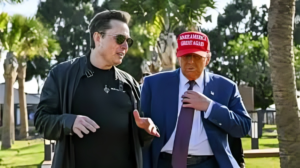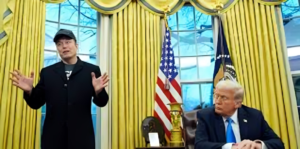When Titans Collide: How the Trump-Musk Alliance Echoes Nixon’s Era
Introduction
In early 2025, an unprecedented partnership emerged at the heart of American governance: former President Donald Trump’s decision to enlist Elon Musk, the world’s most famous entrepreneur, as a senior advisor in the newly-created Department of Government Efficiency (DOGE). This unlikely alliance has raised questions that echo back to the tumultuous presidency of Richard Nixon—questions about concentration of power, conflicts of interest, and the remains of institutional checks and balances. By examining the parallels between the Trump-Musk relationship and the Nixon era, we can better understand the shifting boundaries of executive authority and the risks that accompany top-heavy administrations.

The Birth of a Modern Power Duo
The Trump administration’s establishment of DOGE in January 2025 marked the first time a sitting president handed sweeping administrative powers to a private citizen. Musk’s remit—to cut federal spending and streamline agency operations—seemed efficient in theory, promising trillions in savings. Instead, the rollout has been chaotic: reports of hasty employee terminations, conflicting budget figures, and legal challenges now total over 200 across various federal courts. Critics argue that bypassing career civil servants and legislative oversight mirrors Nixon’s own efforts to centralize decision-making within the executive branch during Watergate and beyond.
Key Similarities to the Nixon Era
- Concentration of Power: Nixon famously relied on a small circle of advisors and the so-called “Plumbers” unit to handle sensitive tasks outside normal channels. Today, DOGE operates in a similarly insular fashion, with Musk at the center of major decisions once handled by multiple agencies.
- Ethics Under Scrutiny: Just as Watergate uncovered abuses of power, Musk’s financial ties—ranging from SpaceX contracts to Tesla lobbying—have prompted fresh emoluments-clause debates. Observers note that when private interests mix with presidential authority, accountability often takes a back seat.
- Legal and Institutional Pushback: In the 1970s, Congress and the judiciary pushed back hard against Nixon’s overreach, leading to landmark reforms like the Ethics in Government Act. Today’s wave of lawsuits and congressional hearings over DOGE’s operations reflect a renewed struggle to define how far a president can delegate authority to unelected advisors.
Real-Life Example: Budget Cuts Gone Awry
In April 2025, DOGE announced a purported $160 billion in savings. Yet an independent analysis revealed that premature layoffs and accounting errors had actually cost the government an estimated $135 billion. Federal employees reported being notified without due process, and some agencies were left unable to fulfill core missions. This misstep recalls Nixon’s economic interventions—such as wage-price controls—that created short-term headlines but long-term unintended consequences.
Mid-Body Story: The Fall-Out in the West Wing
Just weeks into Musk’s formal advisory role, tensions flared behind the scenes. A physical altercation between Musk and a senior aide in the West Wing—triggered by conflicting visions for regulatory reform—evoked memories of the bitter infighting that plagued Nixon’s White House. The incident underscored how blending corporate aggression with political governance can produce volatile results, especially when personalities clash over policy direction.
 Lessons from Nixon for Today’s Leadership
Lessons from Nixon for Today’s Leadership
- Transparent Oversight Is Crucial: Post-Watergate reforms forced greater disclosure of executive actions. Any modern leader must ensure that private advisors operate under clear ethical guidelines and transparency measures.
- Balance Between Innovation and Procedure: While Musk’s innovative approach promised rapid change, bypassing established procedures risked mission-critical failures. Nixon’s undoing taught us that ends don’t always justify means.
- Legal Safeguards Must Evolve: The lawsuits against DOGE reflect a legal system still catching up to novel governance structures. Updating statutes to address public-private power sharing can prevent future crises.

Conclusion
The Trump-Musk partnership, for all its ambition, lays bare the enduring tension between executive ambition and constitutional restraint. As America watches the fallout from DOGE’s early months, the lessons of the Nixon era remain strikingly relevant: unchecked power, blurred personal and public interests, and internal secrecy can swiftly erode democratic norms. If policymakers hope to harness innovation without sacrificing accountability, they must heed history’s warnings and craft a governance model that balances agility with rigorous oversight.